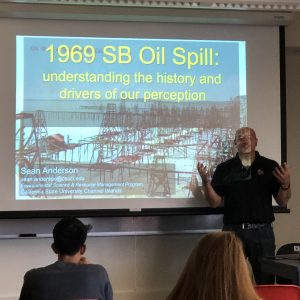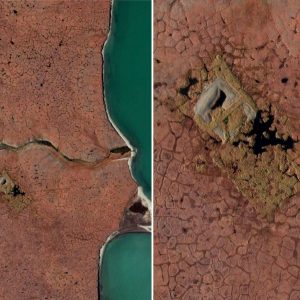 A few weeks ago saw me up in Simi Valley speaking to folks from young to old about what began last May 19 at Refugio Beach. I always enjoy giving one of our monthly installment of the CSU Channel Islands Library Lecture Series, an array of public lectures held across Ventura County open to all comers. This presentation had a lot of great input and probing queries from this much-engaged crowd. My screencast below only captures some of this back and forth that extended for 45 minutes post-talk. Keep those questions coming and keep staying hungry for answers. More are on the way, but we must be vigilant and never stop our engagement if we hope to have a safer and more sustainable energy infrastructure.
A few weeks ago saw me up in Simi Valley speaking to folks from young to old about what began last May 19 at Refugio Beach. I always enjoy giving one of our monthly installment of the CSU Channel Islands Library Lecture Series, an array of public lectures held across Ventura County open to all comers. This presentation had a lot of great input and probing queries from this much-engaged crowd. My screencast below only captures some of this back and forth that extended for 45 minutes post-talk. Keep those questions coming and keep staying hungry for answers. More are on the way, but we must be vigilant and never stop our engagement if we hope to have a safer and more sustainable energy infrastructure.
Oil Spills in Context: Understanding Ecological & Sociological Impacts of the
May 2015 Refugio Oil Spill
The Plains All American pipeline rupture on May 19, 2015 spilled an estimated 79,000 l (21,000 gallons, 500 barrels) of unrefined crude oil onto Refugio State Beach (Santa Barbara County, California) and into the Pacific Ocean. Heavy coastal oiling affected Refugio and El Capitan State Beaches immediately. We then entered a period of highly variable tarring episodes impacting beaches as far as 170 km from the break over the ensuing weeks, which in turn created a unique arena in which to test tarring impacts. Sandy beach ecosystems dominate the shorelines of this region and so bore the brunt of the impacts from this spill. The animal diversity on the coast dropped and heretofore unobserved conspicuous dead Emerita analoga (sand crabs) became common in the swash zone across several beaches although an independent decline in sandy beach infaunal diversity/abundance across the region over the past year made oil-associated impact detection problematic. Laboratory experiments confirmed the toxicity of deposited tar to developing crab embryos, juveniles, and adults. The spill had immediate but mostly ephemeral effects on people: reducing summer spending at/near the most heavily tarred beaches by an order of magnitude, halving the number of people who felt Santa Barbara-area seafood was safe to eat, and bolstering support for offshore drilling bans. We will discuss this recent spill in the context of other infamous oil spills including the 1969 Santa Barbara Spill, the 2010 Deepwater Horizon blowout in the Gulf of Mexico, and many others.






Leave a Reply